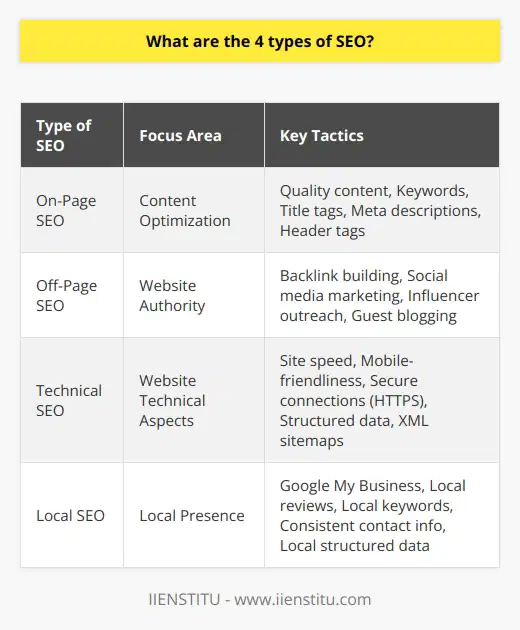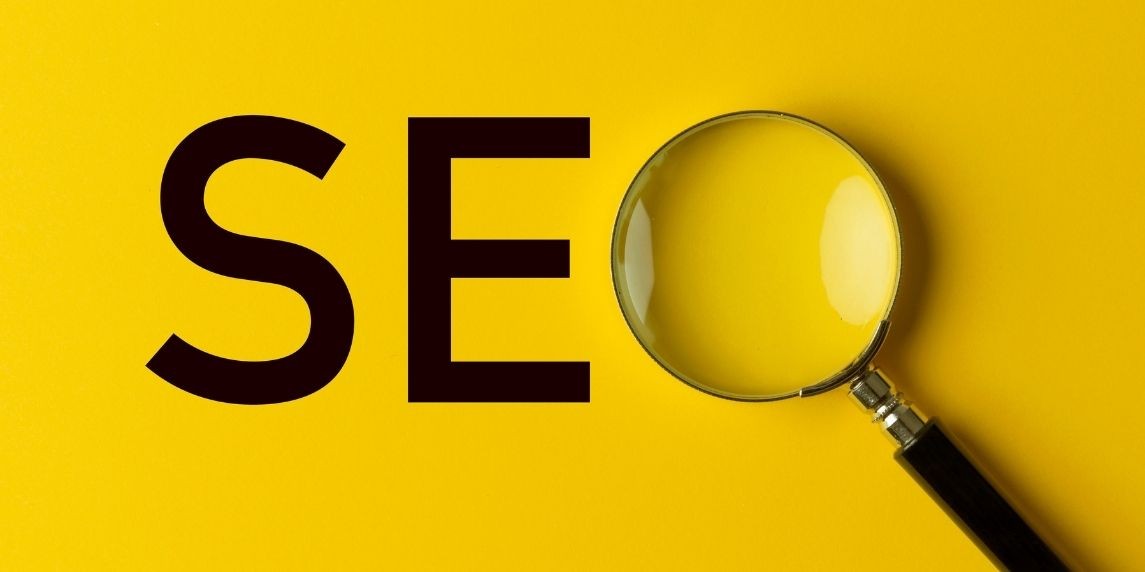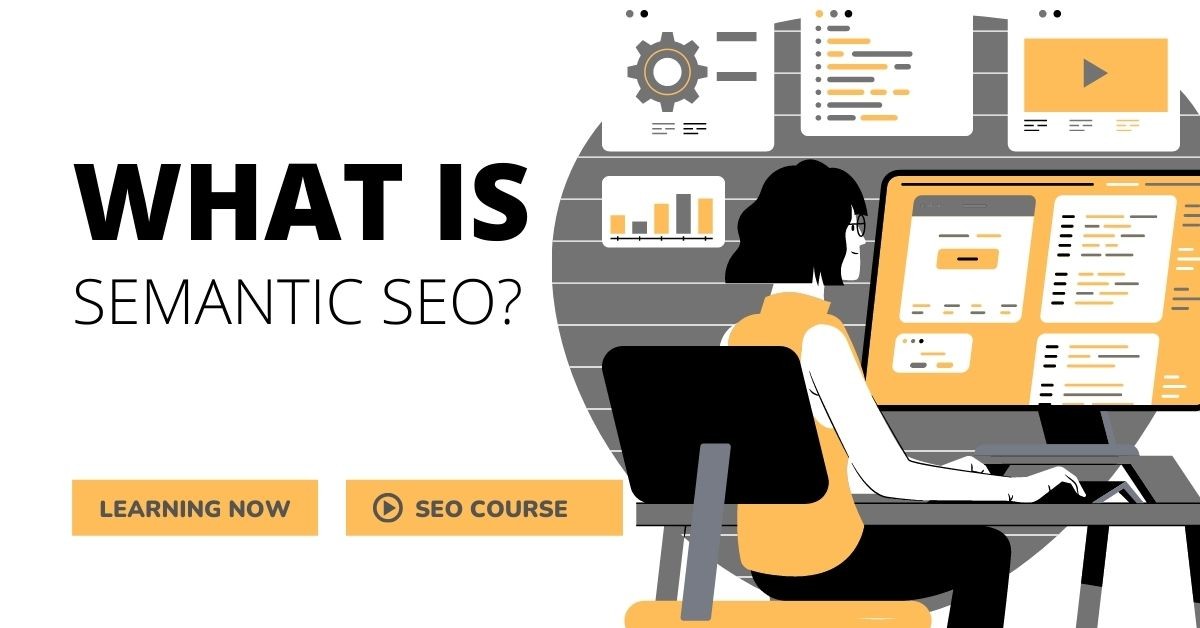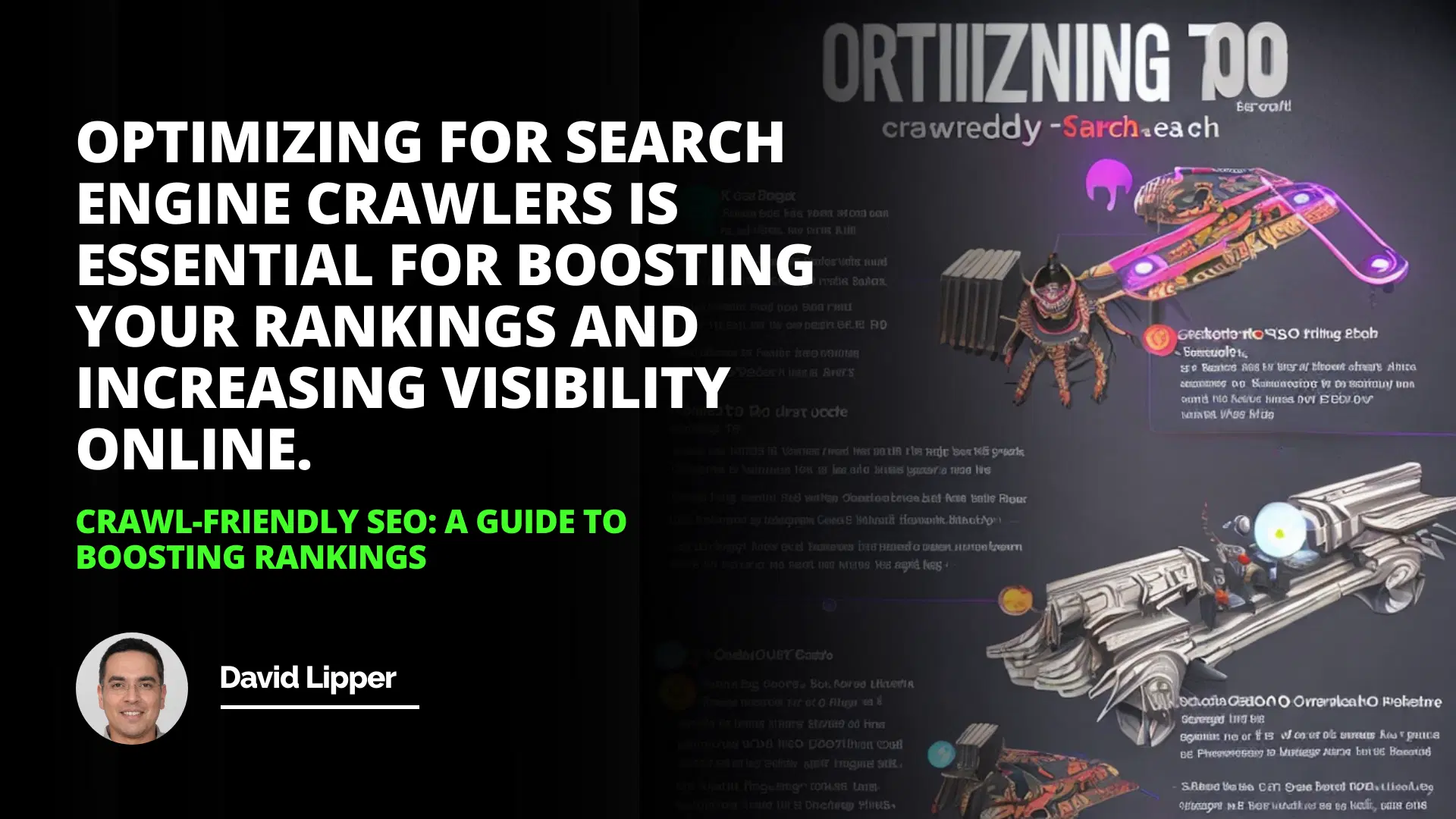
This article discussed web crawling, why crawl-friendly SEO is essential, and why search engine crawlers may not crawl areas of your site. Optimizing your site for crawl-friendly SEO is essential to ensure that your content is properly indexed and ranked in search results.
Introduction
What is Web Crawling?
Why is Crawl-Friendly SEO Important?
Reasons for Search Engine Crawlers Not Crawling Areas of Your Site
Conclusion
Introduction: Web crawling is a process used by search engines to discover content on the web. It is a key part of how search engines build their indices of web documents, and making your site crawl-friendly is an integral part of SEO. However, due to the vastness of the web, search engine crawlers may not crawl all of your site’s content. This article will discuss web crawling, why crawl-friendly SEO is essential, and why search engine crawlers may not crawl areas of your site.
What is Web Crawling?
Web crawling is the process that search engines use to discover content on the web. It is done by sending out "spiders" or "crawlers," which are computer programs that follow links from one page to another. They are also known as web robots or bots. The crawlers collect data from the pages they visit and add it to the search engine’s index. This index is then used to provide users with search results when they type in a query.
Why is Crawl-Friendly SEO Important?
Crawl-friendly SEO is important because it helps search engines find and index your content. This makes it easier for users to find your content when they search for it. It also helps search engines understand the structure of your site, which can help them determine which pages are more important than others. This ensures that the most relevant pages are ranked higher in search results.
Reasons for Search Engine Crawlers Not Crawling Areas of Your Site
There are several reasons why search engine crawlers may not crawl areas of your site. These include:
Poorly formatted URLs: If your URLs are not correctly formatted, search engine crawlers may have difficulty understanding them.
Duplicate content: If you have content that is too similar to other content on the web, search engine crawlers may not crawl it.
Too many redirects: If you have too many redirects on your site, search engine crawlers may become confused and not crawl your site.
Low crawl rate: If your site’s crawl rate is too low, search engine crawlers may not crawl it as often as other sites.
Low-quality content: If your content is not of high quality, search engine crawlers may not crawl it.
Conclusion: Crawl-friendly SEO is important for search engines to find and index your content so that users can find it when they search for it.
However, there are several reasons why search engine crawlers may not crawl areas of your site, such as poorly formatted URLs, duplicate content, too many redirects, low crawl rate, and low-quality content. It is essential to ensure that your site is optimized for crawl-friendly SEO to ensure that your content is properly indexed and ranked in search results.
Optimizing search engine crawlers is essential for boosting your rankings and increasing visibility online.
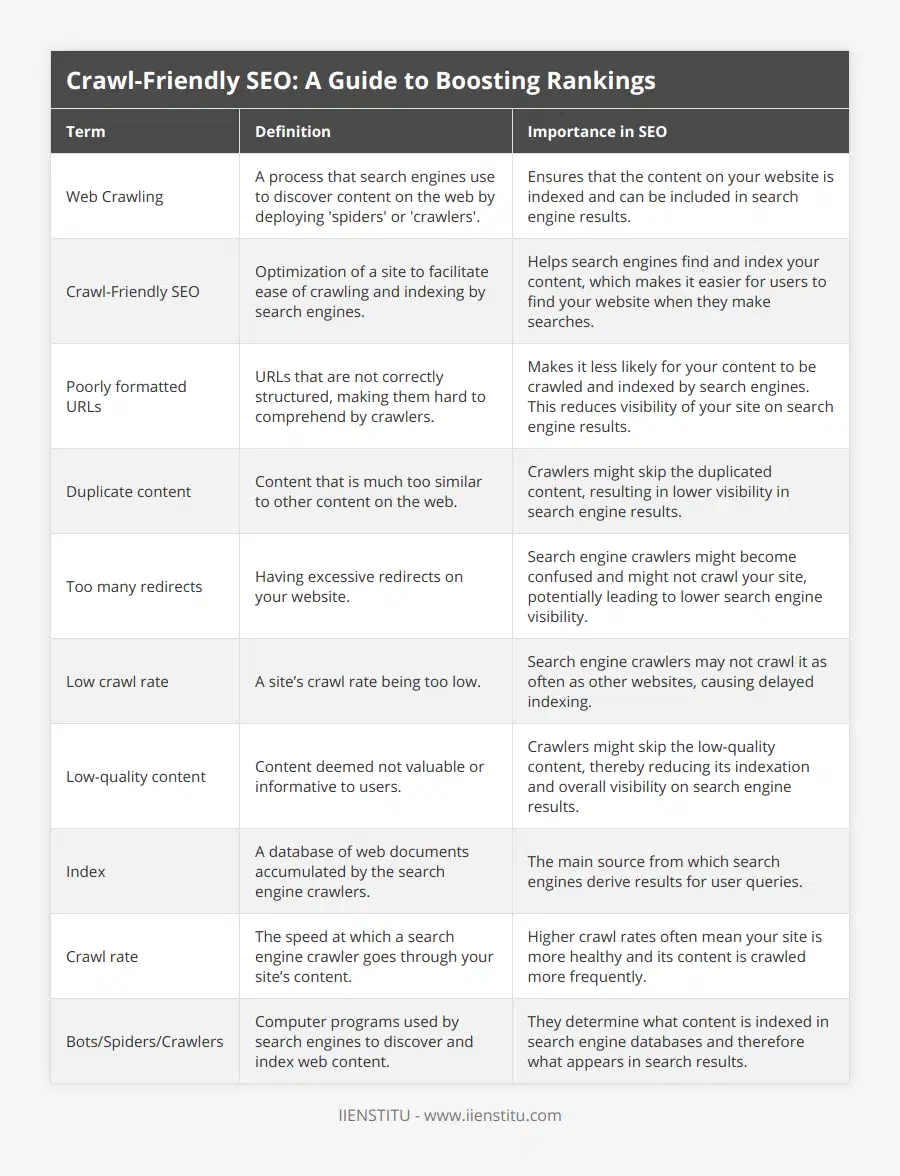
Frequently Asked Questions
What are the benefits of implementing crawl-friendly SEO?
Search engine optimization (SEO) is an integral part of digital marketing. It is the practice of optimizing a website to increase its visibility in search engine rankings. A critical aspect of SEO is making sure your website is crawl-friendly. A crawl-friendly website is easy for search engine crawlers to access, analyze, and index. Implementing crawl-friendly SEO can have several benefits.
The first benefit of crawl-friendly SEO is improved visibility in search engine results. Search engine crawlers can more easily access and index the content on your website, allowing it to appear higher in the search engine rankings. This can result in increased website traffic, as more people will be able to find your website when they search for relevant terms.
Crawl-friendly SEO can also benefit your website by improving the user experience. Search engine crawlers will be able to navigate and access your content more easily, which can make the website easier to use for users. This can result in more user engagement, as people are more likely to spend time on a website if they can find and access what they are looking for quickly and easily.
Another advantage of crawl-friendly SEO is improved indexing of your content. Search engine crawlers can index all of your website's content, including images, videos, and other media. This can help ensure that your content is displayed in the search engine results and can be found by potential customers.
Finally, implementing crawl-friendly SEO can help ensure that your website is secure. Search engine crawlers can identify any security issues on your website, such as malware or malicious code, and can alert you to them so that you can take action to address them. This can help protect your website from malicious attacks and ensure that your users have a safe and secure experience.
In conclusion, implementing crawl-friendly SEO can have several benefits, such as improved visibility in search engine results, improved user experience, improved indexing of your content, and improved security. For these reasons, it is an integral part of any website’s SEO strategy.
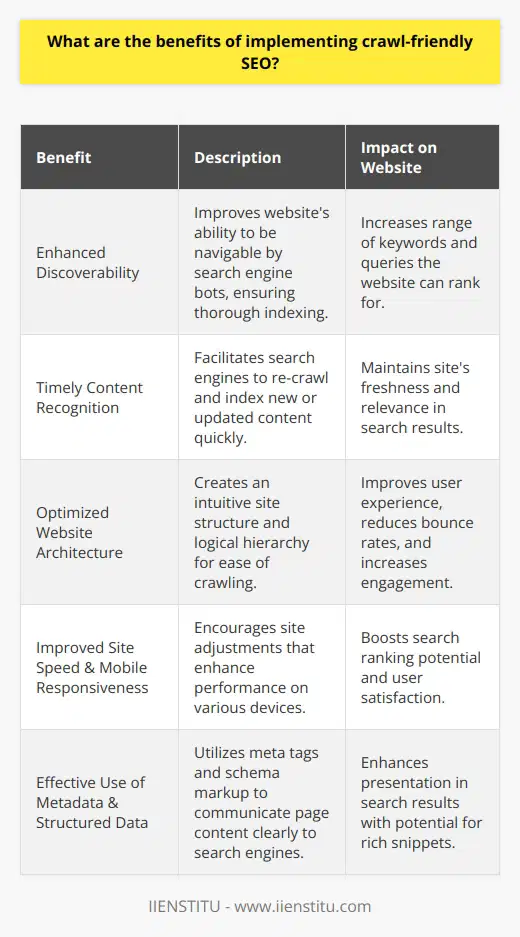
How can I ensure that search engine crawlers are able to access all areas of my website?
Search engine crawlers are essential for website optimization. They are responsible for crawling through the content of websites and indexing them in search engine results. As such, it is essential to ensure that crawlers can access all areas of a website.
There are several steps that website owners can take to ensure that search engine crawlers have access to all areas of their websites. The first step is to create an XML sitemap. An XML sitemap is a file that contains a list of all the URLs that are on a website. This helps ensure that search engine crawlers can easily find and index all the pages. The sitemap should be submitted to all major search engines such as Google, Bing, and Yahoo.
The second step is to configure the robots.txt file of a website. The robots.txt file controls how search engine crawlers access a website. It is important to make sure that the robots.txt file allows search engine crawlers to access all the pages of a website.
Thirdly, website owners should use canonical tags to indicate the primary page of each content group. A canonical tag is an HTML element that helps search engine crawlers determine which page to index when multiple versions of a page exist. Using canonical tags helps search engine crawlers crawl and index the most up-to-date page version.
Finally, website owners should use breadcrumbs to help search engine crawlers access all the pages of their websites. Breadcrumbs are links at the top of a page that allows users to navigate through the website. Using breadcrumbs helps search engine crawlers access all the pages of a website.
In conclusion, website owners must take several steps to ensure that search engine crawlers can access all areas of their websites. This includes creating an XML sitemap, configuring the robots.txt file, using canonical tags, and employing breadcrumbs. Taking these steps will help ensure that search engine crawlers can adequately index a website's pages.
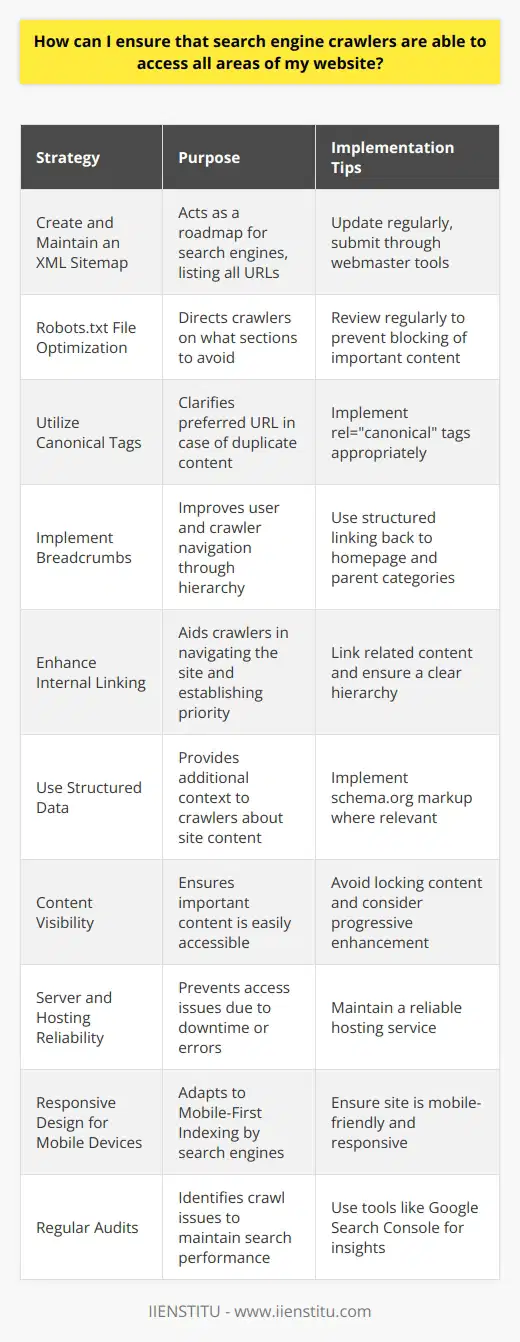
What techniques can I use to optimize my website for crawl-friendly SEO?
Optimizing a website for crawl-friendly SEO is an important step in improving the visibility of a website. This article will discuss the various techniques that can be used to improve website crawl ability and ensure that it is properly indexed by search engines.
The first step in optimizing for crawl-friendly SEO is to ensure that the website is structured correctly. This includes creating well-structured URLs, using descriptive keywords, and ensuring that the website is organized logically. Additionally, it is essential to ensure that all of the content is properly linked and that the website uses valid HTML and CSS.
Another critical factor in improving crawl ability is the use of meta tags. Meta tags are used to provide search engines with information about the content of a page. This includes the page title, description, and keywords. It is important that these tags are accurately filled out as they can significantly impact a website's ranking in search engine results.
In addition to meta tags, it is also essential to use appropriate heading tags. Heading tags are used to indicate the structure of the content on a page and help search engines understand the context of a page. It is essential to ensure that the heading tags are used properly and that they accurately reflect the content on the page.
Finally, ensuring that the website is optimized for speed is essential. This includes ensuring that the website is hosted on a reliable server, minimizing the use of redirects, and minifying the HTML and CSS code. It is also essential to ensure that all images are properly compressed and that the website utilizes caching whenever possible.
By following these techniques, website owners can significantly improve the crawlability of their website and ensure that it is correctly indexed by search engines. This will help improve the visibility of a website and increase its chances of appearing in search engine results.
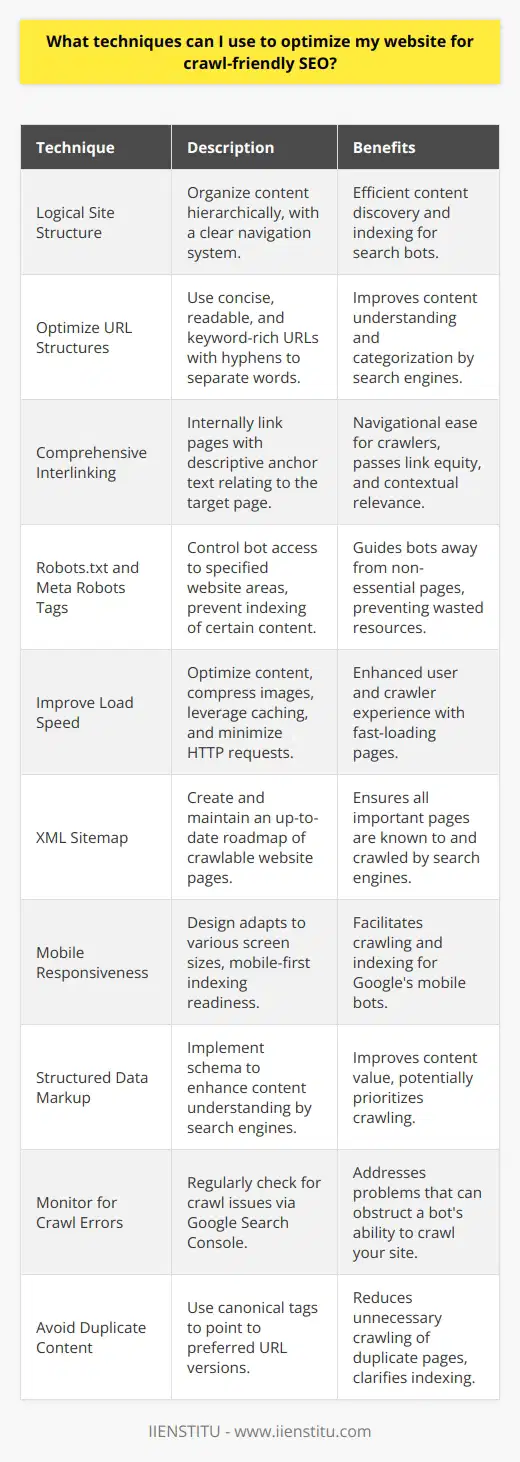
What are the 11 steps to improve SEO rankings?
**Understanding the Steps to Improve SEO Rankings**
Search engine optimization (SEO) is the process of improving website visibility and ranking on search engines such as Google. To enhance a blog post's SEO rankings, 11 key steps can prove instrumental.
**1. Keyword Research**
The first step for effective SEO is thorough keyword research, aiming to target relevant keywords related to the blog post's topic. This enables the blog to appear in appropriate search results for those keywords.
**2. Content Quality**
Original, informative, and high-quality content attracts more natural backlinks, social shares, and engagement, contributing to better SEO rankings.
**3. Keyword Usage**
Strategic placement of the identified keywords – in headings, body text, meta titles, and meta descriptions – improves SEO ranking without incurring keyword stuffing penalties.
**4. Optimal URL Structure**
Incorporating relevant keywords in the URL structure and ensuring it is concise and descriptive increases the likelihood of ranking higher in search engine results.
**5. Mobile-Friendly Design**
With an increasing number of users browsing on mobile devices, implementing a responsive and mobile-friendly design boosts user experience and, consequently, influences SEO ranking.
**6. Site Speed**
Fast-loading websites provide a better user experience, which is rewarded by search engines through improved rankings.
**7. Secure HTTPS Protocol**
Switching from HTTP to HTTPS enhances website security and privacy while favouring SEO rankings, as search engines prioritize websites using encrypted connections.
**8. Internal Linking**
Including relevant internal links within a blog post can significantly assist search engines in understanding the content's context and structure, improving the ranking for targeted keywords.
**9. External Linking**
Linking to credible, authoritative websites strengthens the reliability and authenticity of the blog content, ultimately enhancing SEO ranking.
**10. Social Sharing**
Promoting blog posts through social media channels such as Facebook, Twitter, and LinkedIn generates engagement and amplifies reach, positively impacting SEO rankings.
**11. Analyzing and Adjusting**
Regular evaluation of SEO performance and making necessary adjustments to the strategy is crucial to ensuring consistent improvement in SEO rankings.
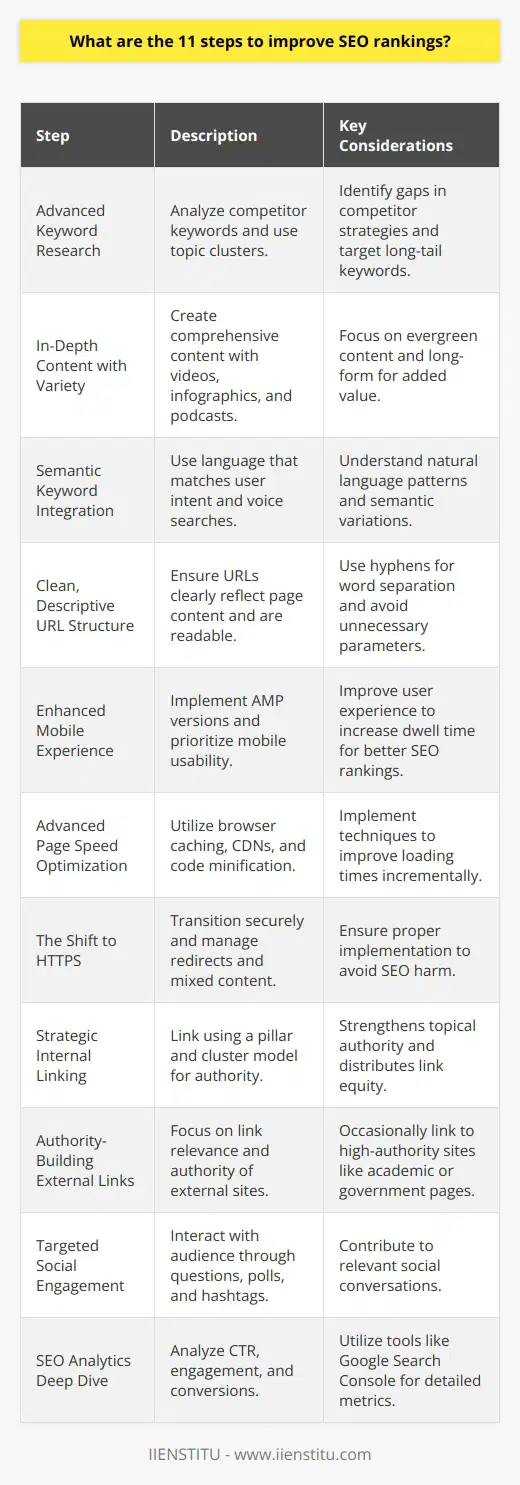
What are the top 5 SEO strategies?
**Keyword Research and Optimization**
One of the most effective SEO strategies is thorough keyword research and optimization. Identifying focus keywords enables content creators to incorporate these into a website's written materials. In turn, search engines can recognize and prioritize the site when displaying relevant search results.
**High-Quality Content Production**
Producing high-quality content ensures that users find value in the information provided, increasing engagement and user satisfaction. Well-researched and unique content appeals to both users and search engines, promoting higher rankings and driving organic traffic.
**Website Speed Improvement**
Optimizing website performance plays a significant role in retaining user interest. A slow-loading website can deter potential visitors and negatively impact rankings. Ensuring quick load times and smooth navigation contributes to a positive overall user experience.
**Mobile-Friendliness Enhancement**
Mobile-first indexing has become increasingly important as the number of mobile searches continues to rise. A responsive website design, with fast loading speeds and easy navigation on mobile devices, is crucial for maintaining visibility and relevance in search engine results.
**Backlink Building and Brand Reputation**
Establishing high-quality backlinks from reputed websites improves a site's credibility in the eyes of search engines. Content creators should collaborate with other reputable websites, secure guest posting opportunities, and build a presence in online communities to drive traffic and bolster their website's authority.

What are the 4 types of SEO?
Types of SEO: On-Page, Off-Page, Technical, and Local
On-Page SEO
On-page SEO involves optimizing individual web pages to rank higher and garner more website traffic from search engines. This process entails refining both site content and HTML source code. Key aspects of on-page optimization include carefully crafted titles, meta descriptions, URL structures, headers, keyword placements, and internal linking strategies. By utilizing these elements effectively, websites can become more search engine friendly and improve their visibility.
Off-Page SEO
Off-page SEO refers to actions taken outside of a website to influence its ranking on search engine results pages (SERPs). Central to off-page SEO are backlinks, which are incoming hyperlinks from external websites. The quantity and quality of backlinks indicate the level of authority a website holds and can significantly impact its rankings. Engaging in influencer outreach, guest blogging, and social media sharing are effective methods of acquiring high-quality backlinks and improving a website's off-page SEO.
Technical SEO
Technical SEO revolves around optimizing a website's backend infrastructure to facilitate search engine crawling and indexing. This type of SEO ensures that websites perform optimally in terms of speed, mobile friendliness, security, and site architecture. Additionally, technical SEO encompasses structured data, XML sitemaps, and robots.txt files, which help search engines better understand site content. Prioritizing technical SEO enables websites to provide a seamless user experience and boosts their chances of ranking higher on SERPs.
Local SEO
Local SEO is the practice of optimizing a website to attract more customers from relevant local search queries. It focuses on aspects such as Google My Business listing, local business directories, customer reviews, and location-specific keywords. By implementing local SEO strategies, businesses can appear prominently in 'near me' searches and Google Maps results, ultimately enhancing their online visibility and attracting more local customers.
